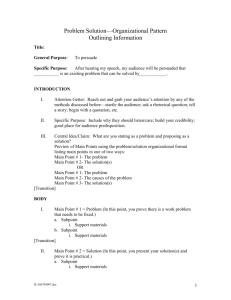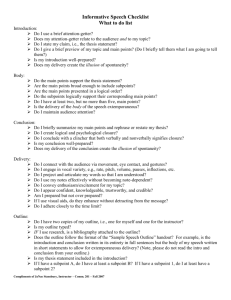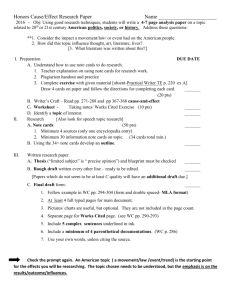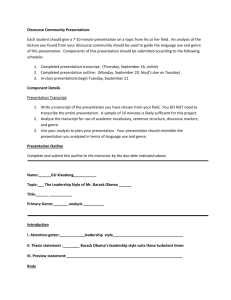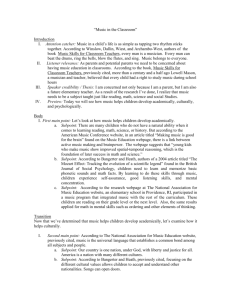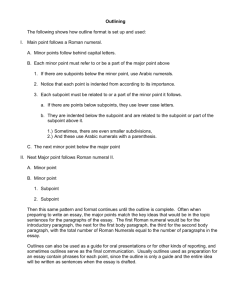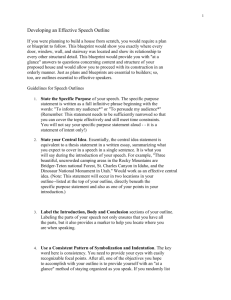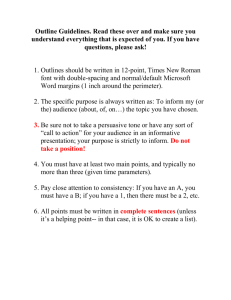AP Psychology Summer Assignment 2014
advertisement
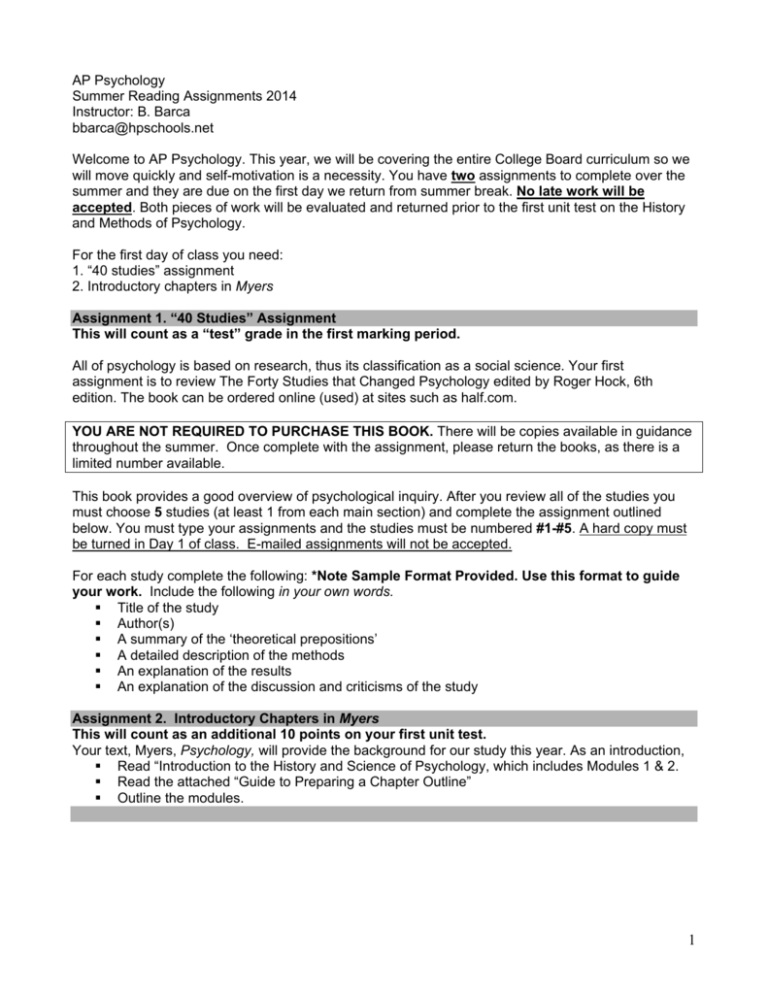
AP Psychology Summer Reading Assignments 2014 Instructor: B. Barca bbarca@hpschools.net Welcome to AP Psychology. This year, we will be covering the entire College Board curriculum so we will move quickly and self-motivation is a necessity. You have two assignments to complete over the summer and they are due on the first day we return from summer break. No late work will be accepted. Both pieces of work will be evaluated and returned prior to the first unit test on the History and Methods of Psychology. For the first day of class you need: 1. “40 studies” assignment 2. Introductory chapters in Myers Assignment 1. “40 Studies” Assignment This will count as a “test” grade in the first marking period. All of psychology is based on research, thus its classification as a social science. Your first assignment is to review The Forty Studies that Changed Psychology edited by Roger Hock, 6th edition. The book can be ordered online (used) at sites such as half.com. YOU ARE NOT REQUIRED TO PURCHASE THIS BOOK. There will be copies available in guidance throughout the summer. Once complete with the assignment, please return the books, as there is a limited number available. This book provides a good overview of psychological inquiry. After you review all of the studies you must choose 5 studies (at least 1 from each main section) and complete the assignment outlined below. You must type your assignments and the studies must be numbered #1-#5. A hard copy must be turned in Day 1 of class. E-mailed assignments will not be accepted. For each study complete the following: *Note Sample Format Provided. Use this format to guide your work. Include the following in your own words. Title of the study Author(s) A summary of the ‘theoretical prepositions’ A detailed description of the methods An explanation of the results An explanation of the discussion and criticisms of the study Assignment 2. Introductory Chapters in Myers This will count as an additional 10 points on your first unit test. Your text, Myers, Psychology, will provide the background for our study this year. As an introduction, Read “Introduction to the History and Science of Psychology, which includes Modules 1 & 2. Read the attached “Guide to Preparing a Chapter Outline” Outline the modules. 1 “40 Studies” Sample Format Read the first study and use the sample below to guide the 5 selections that you choose to submit. 1. (Reading 1) One Brain or Two? Gazzaniga, M. S. (1967). (Sperry contributed) Theoretical Propositions: Questions were raised about the functions about the two sides of the brain. Researchers looked at the functions of the left hemisphere and right hemisphere. Do they have “unique abilities?” A number of questions involving communication were asked. Also, questions were created that pondered the ability of a person to live with two separate brains. Methods: Researchers developed three kinds of experiments. They first tested the person’s visual ability. Patients could only see things placed that were placed deliberately so that only one hemisphere in the brain could process the object. In the second experiment, patients could not see an object, but they could touch it with one hand, which would then send information to one side of the brain. The third experiment tested auditory senses. The testers used the split brain patient and told them to pick an object out of a bag. All of the experiments used a split brain patient to isolate each side of the brain, these patients have no Corpus Callosum. Results: The results showed that the left side of the brain controls the spoken language response and the right side controls the majority of the reasoning. The left side controls the right side of the body and the right side the left. Patients with split brains that held something in their left hand and could not see the object would not be able to say what it was, but they could draw it out. Patients that saw lights in both sides and were asked which side they saw it on, they only said they only saw it on the right side. But when asked to point to what side, they pointed to both. The sides of the brain have different functions. Discussion/Criticism: The discussion revolved around the fact that two brains exist. People speculated whether having four brains would be better? Also, questions about whether each side depends on the other were raised. These findings were very significant and led to treating people with stroke injuries or helping patients relearn forgotten things. There were comments about whether the mind is separate or whether the 2 sides work together. Some people believe that people are inherently more right-brained or left brained. Also, whether or not people who are good at math have bigger right-sides of the brain is questionable. A professor named Jerre Levy explained that when one reads, the left-side of the brain processes the words and the right-side produces emotions, interprets pathos and humor, recognizes descriptions, and appreciates the literary devices. The two sides function together to from a comprehensive understanding/experience. 2 Guide to preparing a chapter outline Title of the Chapter I. Topic of First Main Section of the chapter (include definitions, explanations, details and page numbers) A. First Main Point under the First Main Section of the chapter (include definitions, explanations, details and page numbers) 1. Subpoint under the Main point a. Detail and/or definition for the subpoint 2. Subpoint under the Main point a. Detail and/or definition for the subpoint 3. Subpoint under the Main point a. Detail and/or definition for the subpoint B. Second Main Point under the First Main Section of the chapter (include definitions, explanations, details and page numbers) 1. Subpoint under the Main point a. Detail and/or definition for the subpoint 2. Subpoint under the Main point a. Detail and/or definition for the subpoint 3. Subpoint under the Main point a. Detail and/or definition for the subpoint C. Third Main Point under the First Main Section of the chapter (include definitions, explanations, details and page numbers) 1. Subpoint under the Main point a. Detail and/or definition for the subpoint 2. Subpoint under the Main point a. Detail and/or definition for the subpoint 3. Subpoint under the Main point a. Detail and/or definition for the subpoint II. Topic of Second Main Section of the chapter (include definitions, explanations, details and page numbers) --Continue Outlining Following the Section I guide that includes subcategories, sub-subcategories, definitions, details and page numbers. The Outline is to be used as your study guide for the chapter, so the more complete it is, the better prepared you will be to take the Chapter quizzes and the Unit Exams. 3
